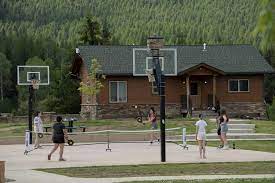We have all read stories where the characters seem to be floating in a white void. They talk, they move, but there is no sense of where they are. This is the fastest way to lose a young reader’s attention. A child’s imagination needs an anchor. It needs to know if the ground is muddy, if the wind is biting, or if the sun is burning the pavement.
When I look at the most enduring children’s books, the setting isn’t just a backdrop; it is a participant. It pushes the hero, creates the mood, and often dictates the rules of the adventure.
I spend a lot of time analyzing what makes narratives stick. If you visit Bahrku, you’ll see that effective storytelling relies heavily on visual and atmospheric cues. Whether I am curating lists or looking at resources in the shop, I always prioritize stories where the environment feels tangible. A well-crafted setting does the heavy lifting for the writer. It tells the reader how to feel without explicitly stating it.
The Psychology of Seasonal Settings
Seasons are the easiest shorthand we have for emotional tone. We are hardwired to associate weather with specific feelings. When writing or selecting books for children, understanding this psychological link is crucial. You aren’t just picking “snow” because it looks pretty; you are picking it because you want the character to feel isolated or cozy.
In my experience, leaning into these associations helps children process complex emotions. If a character is sad, a rainy autumn setting validates that feeling. If they are excited, the burst of spring energy mirrors their internal state.
Emotional Associations by Season
| Season | Primary Emotion | Secondary Emotion | Typical Narrative Role |
| Spring | Hope / Renewal | Chaos / Energy | The start of a journey or a new friendship. |
| Summer | Freedom | Lethargy / Tension | Adventures without adult supervision; facing fears. |
| Autumn | Melancholy | Mystery / Comfort | Dealing with change, loss, or spooky occurrences. |
| Winter | Isolation | Safety / Survival | The “hearth” story; family bonding or surviving the elements. |
Why Winter Works for Intimacy
I find winter settings fascinating because they force proximity. When it is freezing outside, characters must come inside. This creates a “bottle episode” scenario. They have to talk. They have to resolve conflicts because they cannot leave the cave, the cabin, or the castle. It creates instant stakes.
Why Summer Creates Adventure
Conversely, summer removes barriers. The days are long. School is out. The weather permits travel. If I want a story about exploration or a character proving they can handle the world alone, I almost always set it in summer. The environment itself gives permission to roam.
The Deep Woods vs. The Magical Kingdom
Beyond the weather, the physical location creates the rules of the universe. Two of the most common settings in children’s literature are the Forest and the Kingdom. They serve completely different purposes.
I have noticed a trend where writers try to mix these too casually, but they represent different psychological stages for a child. The Forest is the subconscious. It is wild, untamed, and personal. The Kingdom is society. It has laws, rulers, and social hierarchies.
Comparison: Forest Settings vs. Kingdom Settings
| Feature | The Deep Forest | The Magical Kingdom |
| Core Conflict | Man vs. Nature / Self | Man vs. Society / Villain |
| Rules | Survival of the fittest; instinct. | Court etiquette; magical laws. |
| Danger Source | Animals, getting lost, darkness. | Tyrants, curses, social embarrassment. |
| Child’s Role | The Survivor / Explorer. | The Savior / Heir. |
| Best For | Stories about bravery and independence. | Stories about justice, fairness, and leadership. |
The Utility of the Forest
I prefer forest settings for “coming of age” moments. In the woods, a child is stripped of their labels. They aren’t a student or a sibling; they are just a human trying to get from point A to point B. The trees block the line of sight, which adds immediate suspense. You don’t know what is coming next. That uncertainty keeps the pages turning.
The Structure of the Kingdom
Kingdoms, on the other hand, are great for teaching social dynamics. Even if the kingdom is populated by talking toads, it mirrors the structure of a school or a family unit. There is a hierarchy. The protagonist usually has to disrupt an unfair system. If the goal is to teach a child about fairness or standing up to a bully, the structured environment of a kingdom (or a school, or a city) is the right tool.
How Environment Shapes the Narrative Arc
A common mistake is treating the setting as a static painting. The sun shines, the birds sing, and the plot happens in front of it. This is a wasted opportunity. The environment should throw rocks at the protagonist.
If I am writing a scene where a character is rushing to deliver a message, a sunny day offers no resistance. But a sudden thunderstorm? Now the bridge is washed out. Now the character has to make a choice: swim and risk drowning, or find a longer route and risk being late. The setting just created a plot point.
Ways Weather Drives the Plot
-
The Obstacle: A snowstorm traps the bus. The characters must work together to stay warm.
-
The Ticking Clock: The tide is coming in. They have to find the treasure in the cave before the water rises.
-
The Mood Shift: The sun sets, and the friendly park becomes a scary shadow land. This forces the character to confront their fear of the dark.
-
The Resource Scarcity: A drought means the village has no water. The hero must leave home to find a new spring.
I always advise looking at the setting as an antagonist. It doesn’t have to be “evil,” but it should be difficult. Friction creates interest. If everything is easy and the weather is perfect, the victory feels unearned.
The Sensory Experience: Writing Beyond Visuals
Children experience the world with their whole bodies. They touch sticky pine sap. They smell wet dogs. They feel the vibration of thunder in their chest. Yet, many stories rely 90% on visual descriptions.
When I read a draft that feels flat, it is usually because it lacks texture. “The woods were scary” is weak. “The branches scratched his face like angry fingernails and the air smelled like old mud” is strong. It triggers a visceral reaction.
Sensory Checklist for Settings
-
Sound: Is it silent? Does the snow dampen the sound? Do dry leaves crunch? The absence of sound can be just as loud as a scream.
-
Temperature: Is the character sweating? Are their fingers numb? Physical discomfort makes the character’s struggle feel real to the reader.
-
Smell: This is the strongest link to memory. The smell of rain on hot asphalt (petrichor) instantly places a reader in a summer storm.
-
Lighting: Long shadows in the afternoon create a very different vibe than the harsh, flat light of noon.
Practical Tips for Choosing the Right Season
Choosing a setting shouldn’t be random. It needs to serve the theme. If the story is about a friendship ending, setting it in the middle of a blossoming spring meadow creates a dissonance (unless you are being ironic). Usually, you want the outside world to mirror the inside world.
Here is a breakdown of the pros and cons of using specific seasonal backdrops based on my writing experience.
Pros and Cons of Seasonal Settings
| Season | Pros (Advantages) | Cons (Challenges) |
| Winter | High stakes (freezing); cozy atmosphere; clear visuals (white snow). | Can feel repetitive; limited color palette; characters are often stuck inside. |
| Spring | Optimistic; allows for many animal characters; great for younger kids. | Can feel cliché; lacks inherent danger or conflict compared to winter. |
| Summer | endless plot possibilities; relatable to school holidays. | Harder to create “cozy” moments; the freedom can sometimes lower the stakes. |
| Autumn | rich sensory details (colors, crunching); perfect for mystery. | Can feel sad or gloomy; often associated specifically with Halloween. |
Changing Seasons as a Metaphor for Growth
One of the most powerful tools in a writer’s kit is the passage of time. A story that starts in winter and ends in spring tells the reader that the hardship is over. The ice has melted. The hero has survived.
I love using the cycle of seasons to show character growth. If a character is timid in the autumn, perhaps they retreat into their shell during winter. When spring arrives, they emerge changed. They have weathered the storm. This is a subtle way to teach resilience. The child reader understands that “bad weather” (bad times) doesn’t last forever. The sun always comes back.
This is particularly useful for stories dealing with grief or big life changes, like moving to a new house. You use the setting to validate the pain (Winter) and then promise a future (Spring). It provides a safety net for the young mind.
Troubleshooting Your Setting
Sometimes I read a story and it feels “floaty.” The dialogue is good, but I don’t believe the characters are actually there.
If you face this, try the “lights out” test. If you removed all the dialogue, would the reader know where the characters are? If the answer is no, you need to add grounding details.
Don’t just say they are in a kitchen. Mention the hum of the refrigerator. Mention the cold tile on their bare feet. These small details act as anchors. They pull the reader out of their room and into your world.
Also, watch out for “generic village syndrome.” If your setting looks like every other storybook village, give it a quirk. Maybe it always rains on Tuesdays. Maybe the trees are blue. Specificity creates authenticity. A generic setting is forgettable; a specific one becomes a friend.
Frequently Asked Questions
1. Can I mix fantasy elements with real-world seasons?
Absolutely. In fact, grounding fantasy in realistic weather makes the magic feel more believable. If a dragon is flying through a very real, very cold blizzard, the physical struggle against the wind makes the dragon seem solid. Contrast creates reality.
2. Is the “Dark Forest” too scary for younger children?
It depends on the guide. If the child protagonist is alone and helpless, yes, it can be terrifying. But if they have a lantern, a map, or a companion, the dark forest becomes a challenge rather than a trauma. The setting is only as scary as the character’s ability to cope with it.
3. How much description is too much for a kid’s book?
Kids have short attention spans. Avoid long paragraphs describing a sunset. Instead, weave the description into the action. Don’t say “The snow was deep.” Say “He struggled to lift his boots out of the heavy snow.” Show the effect of the setting on the character.
4. Do illustrations do all the work for the setting?
Illustrations are vital, but the text must do its share. A picture can show you a tree, but it cannot tell you how the bark feels or how the forest smells. The words provide the sensory texture that the image cannot. They work in tandem, not in place of one another.
Conclusion
The setting is the silent character in every story. It dictates the mood, challenges the hero, and anchors the child’s imagination. Whether it is the biting cold of a winter survival tale or the endless possibility of a summer afternoon, the environment matters. It transforms a sequence of events into a lived experience. When we get the setting right, we don’t just tell a child a story; we invite them to live inside it for a while. That immersion is what turns a reluctant reader into a lifelong book lover.











Discussion about this post